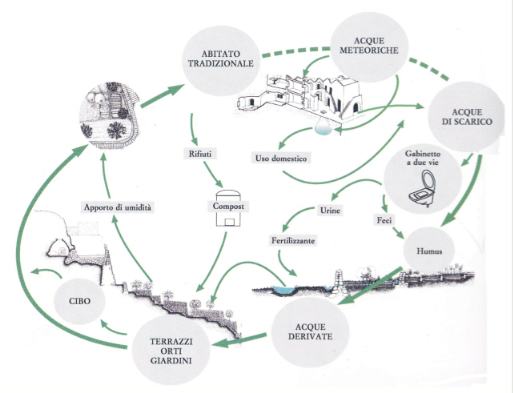From TKWB - Traditional Knowledge World Bank
Jump to navigation
Jump to search
| GENERAL DEFINITION OF THE TECHNIQUE |

|
| Technique: |
AUTOPOIETIC COMMUNITIES |
|
Definition characters description and diffusion
Communities, that thanks to the internal collaboration and harmony with nature, create even under the harshest environmental conditions, life cycles and production capable of perpetuating itself and regenerate continuously, with high levels of independence from exogenous factors.
General characters description and diffusion
It has been demonstrated that at a natural level organisms have a higher possibility of surviving using processes of symbiosis and alliances rather than confrontation and hostility. Even for human communities, union and the good use of resources are, historically, a guarantee of success in the long term. These situations of careful relationships between society and nature are found particularly in areas with the most difficult environmental conditions, where the effort necessary to the creation of viability creates and hands down the rules of humility and respect for the environment. However, from the settlement of oases, typical of the desert and autopoietic systems for excellence, you can infer an enlarged model of close man-nature collaboration capable of creating in every condition life cycles, autopoietic ecosystems, therefore capable of self-reproduction, self-perpetuation, and continual self-regeneration. The paradigm of sustainability can therefore be applied to contexts where resources appear to be very abundant that often leads to a progressive increase in their consumption in a process of degenerative trends. Even in a very arid environment free of vegetation like the desert, innumerous specific ecosystems can be found which go against the general pattern, they break up the negative circuit of aridity, the vicious process of impoverishment of the soils, and trigger phenomena of amplification of the available resources. When, maintaining these characteristics, the communities reach superior levels of dimension, of social specialization, of constructive achievement; a sustainable urban ecosystem is determined. This represents the model of oases extended on a vast range of settlement reality based on homeostasis and on the self-maintenance that they make a leap in scale through the exploitation of a trading position or wealth provided by a specific resource. The urban ecosystem is in conclusion the synthesis of local knowledge accumulated in history and in culture.

Advantages and sustainability
These communities operate and function due to collaboration and harmony with nature and are therefore sustainble and offer many benefits such as being able to survive independent of other factors.
Images
Deepening
|
TRADITIONAL TECHNIQUE DATA
| Author: |
|
| Other authors: |
|
| Reference: |
|
|
|